This post may contain affiliate links. Please read our disclosure policy.
This gluten free English muffin bread is light, tender and soft, with a soft crust. It's the easy white sandwich bread you've been searching for!
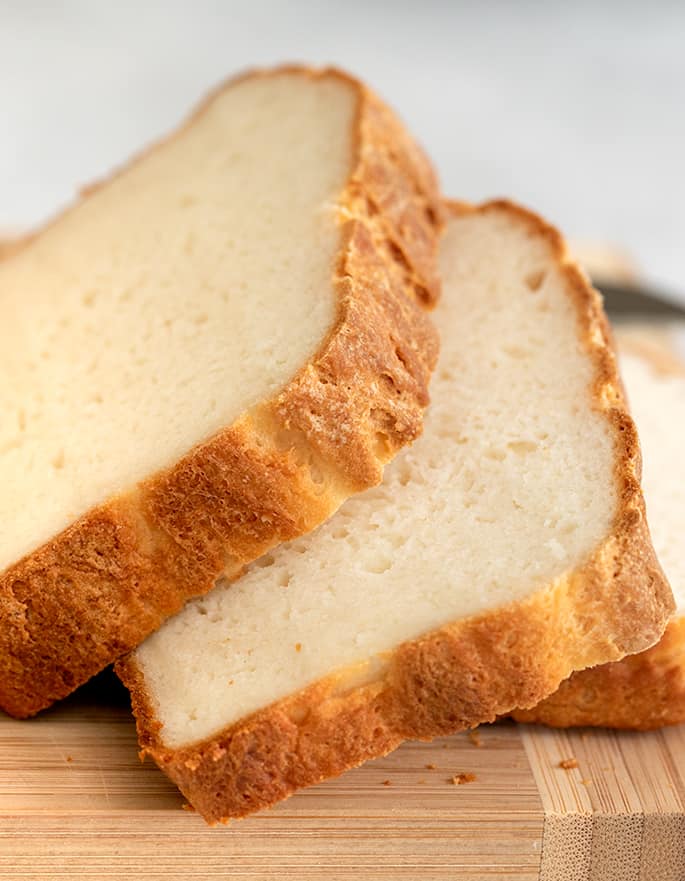
Table of Contents
- What makes this recipe for gluten free English muffin bread special
- Tips on making gluten free English muffin bread
- How to store this gluten free English muffin bread after baking
- Making gf English muffin bread with bread flour or with all purpose gf flour
- Gluten free English muffin bread: Ingredients and substitutions (and equipment)
- How to make gluten free English muffin bread
- Gluten Free English Muffin Bread Recipe
What makes this recipe for gluten free English muffin bread special
If you've been thinking of baking bread, and you're not sure where to begin, start with this recipe. There's no real shaping, as it's a batter dough by nature.
Plus there's no long refrigerator rise, so in just a couple hours you're ready to slice into a nice warm loaf of fresh bread. Only a few minutes of that time are even active.
This gluten free English muffin bread is by nature a wet dough. So not only does it rise quickly, but it will rise even if it's in a drier environment. It's still possible to dry it out enough that it won't rise, but there's a bigger margin for error.
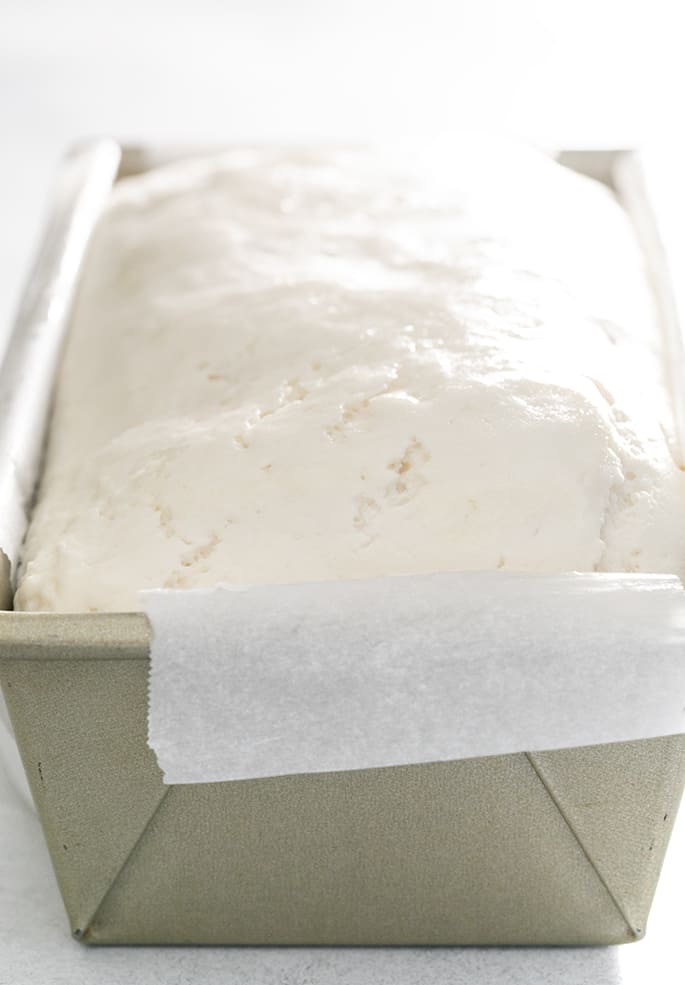
Tips on making gluten free English muffin bread
The dough rises relatively fast
It's a relatively wet dough by nature, and one that you don't really shape in the “traditional” sense. But that's not because it's gluten free. It's just the nature of English Muffin Bread.
It's a super wet yeast dough, and moisture makes it double fast. Then, all that's left is to scrape it into a loaf pan, smooth the top, cover it and let it rise.
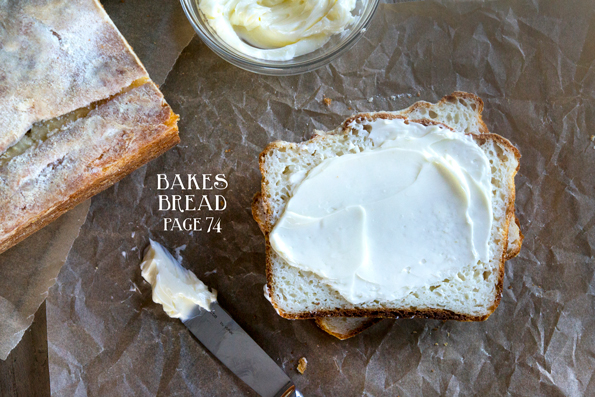
Yeast bread baking can be nerve-wracking
Whenever I ask readers on my email list about their biggest struggle with gluten free baking, I get hundreds of responses. And a few themes often emerge.
One of those themes was about your struggles with gluten free bread. And, like in conventional bread baking, the problem was most often with getting the bread to rise properly. It can be so frustrating!
Baking yeast bread is very environment-dependent. So when I bake bread in the wintertime, it takes a bit longer to rise since the air is not only a bit colder, but quite a bit drier. If you live in a very dry climate year-round, you may even have to add a bit more moisture to your bread dough.
One of the most common problems with baking bread in general is dough that has dried out. If you let it rise without covering it, the dough will lose too much moisture and won't rise properly.
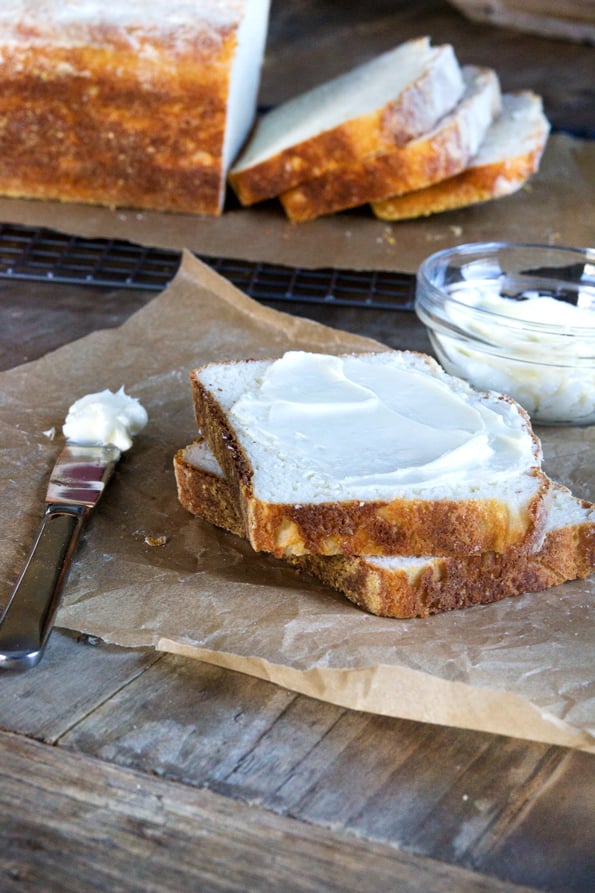
How to store this gluten free English muffin bread after baking
To store it, slice it thickly, and place a small piece of parchment or waxed paper between each slice and the next. Then, place everything in a freezer-safe bag, draw as much of the air out of the bag as possible, then place the bag in the freezer.
This is good practice with any bread that is high in moisture like this one, so the slices don't stick to one another as they freeze. It's not necessary with most of the other breads, though.
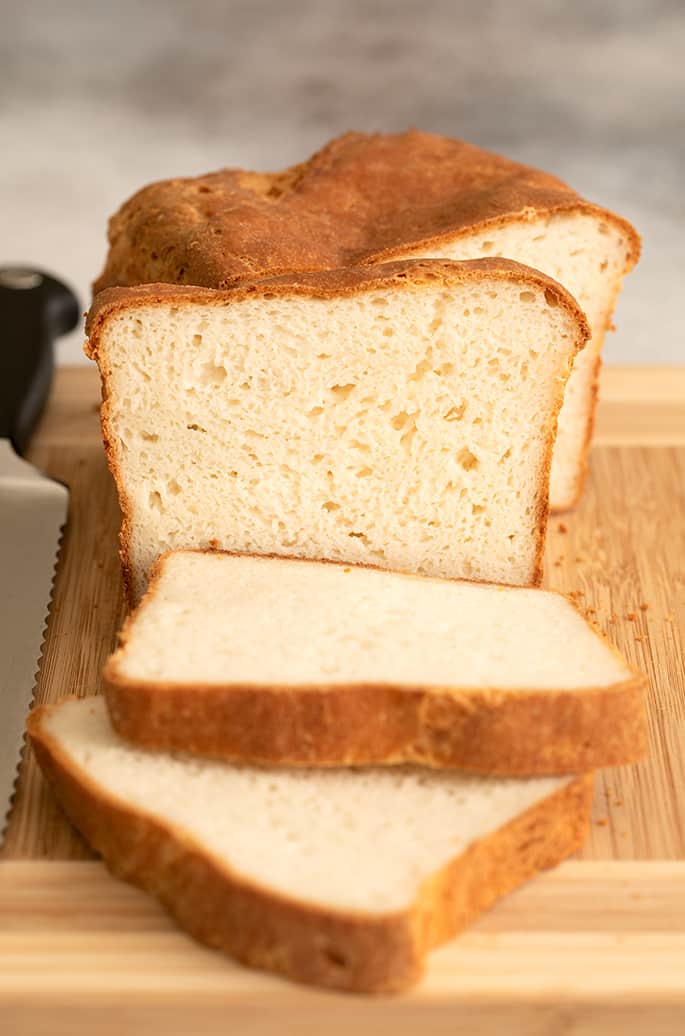
Making gf English muffin bread with bread flour or with all purpose gf flour
When I first developed a recipe for gluten free English muffin bread, it was for my very first cookbook. The flour blend I used and recommended was Better Batter, my old stand-by all purpose gluten free flour blend. It was and is a great loaf of gluten free bread.
Then, I wrote my third cookbook, Gluten Free on a Shoestring Bakes Bread and began experimenting with gluten free bread flour (which is essentially Better Batter + Expandex modified tapioca starch + whey protein isolate). I developed a modified English muffin bread recipe that is made with that gluten free bread flour. That recipe is included here.
The bread made with bread flour is a bit more chewy, and the dough has more flavor since there is short first rise, followed by a longer rise in the loaf pan. Both recipes works great. The choice is yours…
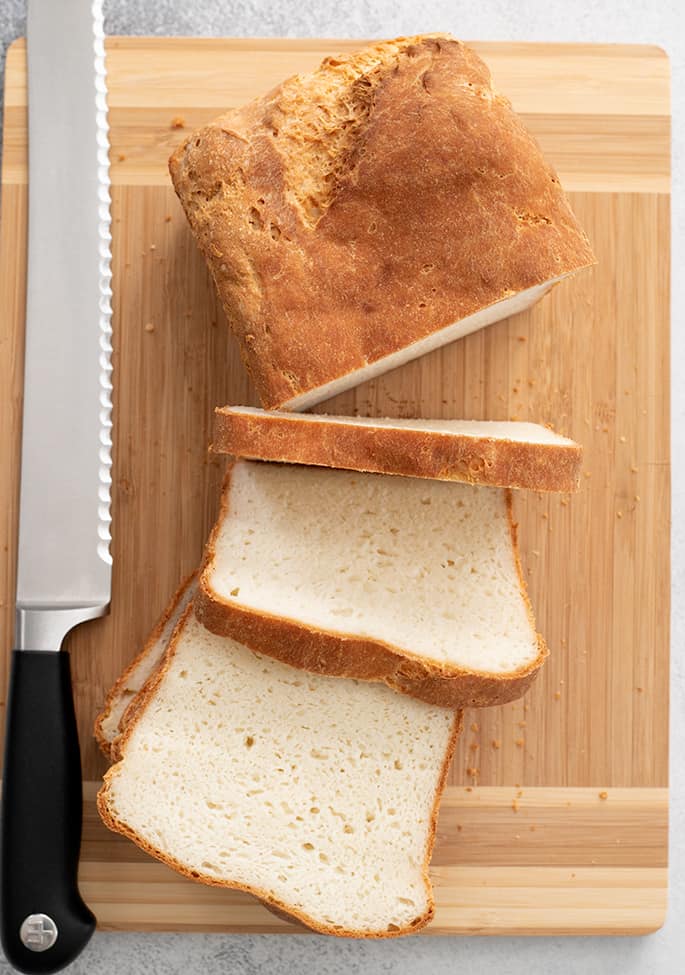
Gluten free English muffin bread: Ingredients and substitutions (and equipment)
Gluten free dairy free English muffin bread
If you're dairy free, please use the “all purpose flour recipe,” without bread flour, which necessarily has dairy in the form of whey protein isolate. The only thing you'll have to replace is the milk.
In place of cow's milk, you can use your favorite unsweetened nondairy milk. I like unsweetened almond milk. Just don't use canned coconut milk, which is too thick.
Gluten free egg free English muffin bread
If you can't have eggs and you're willing, I recommend using the bread flour recipe. It's a simpler recipe overall, since it doesn't need cream of tartar, cider vinegar, egg white or oil.
Vinegar
In place of apple cider vinegar, which activates the baking soda and helps the bread rise, you can try using white wine vinegar or white balsamic vinegar. The bread flour recipe doesn't call for vinegar at all, if that's important to you.
Stand mixer
If you don't have a stand mixer, you'll still need to beat this bread dough quite well. Second best to a stand mixer would be a food processor fitted with the steel blade.
If you don't have either machine, try using a hand mixer with dough hooks, if you have them. Or beaters, if you don't. Keep beating until the mixture begins to look slightly “whipped” like air has been incorporated into it.
How to make gluten free English muffin bread
Gluten Free English Muffin Bread
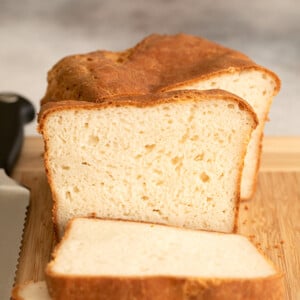
Equipment
Ingredients
For the gf bread flour variation
- 3 cups (420 g) gluten free bread flour blend, (click thru for full info & ingredients), plus more for sprinkling
- 1 ⅔ teaspoons (5 g) instant yeast
- 1 tablespoon (12 g) granulated sugar
- 1 ½ teaspoons (9 g) kosher salt
- 1 ⅔ cups (13.33 fluid ounces) warm milk, about 95°F
- Coarsely ground gluten free cornmeal, for sprinkling (optional)
For the all purpose gf flour variation
- 3 ½ cups (490 g) all purpose gluten free flour blend, (I used Better Batter; please click through for appropriate blends)
- 2 ½ teaspoons xanthan gum, omit if your blend already contains it
- ¼ teaspoon cream of tartar
- 1 tablespoon (12 g) granulated sugar
- 2 ½ teaspoons (8 g) instant yeast
- 2 teaspoons (12 g) kosher salt
- ¼ teaspoon baking soda
- 1 teaspoon apple cider vinegar
- 1 (25 g) egg white, at room temperature
- 2 tablespoons (28 g) neutral oil, (canola, vegetable, grapeseed oils all work)
- 2 cups (16 fluid ounces) warm milk, (about 95°F)
- Coarsely ground gluten free cornmeal, for sprinkling (optional)
Instructions
For the gf bread flour variation.
- In the bowl of your stand mixer, place the flour, yeast, and sugar, and use a handheld whisk to combine well. Add the salt, and whisk to combine.
- Add the milk and mix with the paddle attachment until the dough is smooth. It will be wet.
- Cover the bowl with oiled plastic wrap, and set in a warm, draft-free location to rise until nearly doubled in size (about 40 minutes).
- Preheat your oven to 350°F. Grease well a standard 9-inch x 5-inch loaf pan and sprinkle the bottom and sides with the (optional) cornmeal.
- Once the dough has doubled, stir it down to deflate it a bit and scrape it into the prepared loaf pan.
- Place in a warm, draft-free location to rise until the dough is about 1/2 inch above the sides of the pan (about 1 hour).
- Remove the plastic wrap from the loaf pan, sprinkle the top of the loaf lightly with the (optional) cornmeal, and place it in the center of the preheated oven.
- Bake until the loaf is lightly golden brown, registers 185°F in the center on an instant-read thermometer, and sounds hollow when thumped on the bottom (about 35 minutes).
- Once the loaf is done baking, remove the pan from the oven and allow the bread to cool in the loaf pan for about 10 minutes before transferring to a wire rack to cool completely. Slice thickly and serve.
For the all purpose gf flour variation.
- In the bowl of a stand mixer fitted with the paddle attachment, place the flour, xanthan gum, cream of tartar, sugar, and yeast, and whisk to combine well. Add the salt and baking soda, and whisk again to combine.
- Add the vinegar, egg white, oil, and milk, and mix on low speed to combine.
- Turn the mixer up to medium high speed, and mix for about 3 minutes or until the dough begins to look somewhat “whipped,” like air has been incorporated into it.
- Preheat your oven to 375°F. Grease well a standard 9-inch x 5-inch loaf pan and sprinkle the bottom and sides with the (optional) cornmeal.
- Scrape the mixture right into the prepared loaf pan. Smooth the top with a wet spatula, and cover with oiled plastic wrap.
- Place in a warm, draft-free location to rise until the dough is about 1/2 inch above the sides of the pan (about 1 hour).
- Remove the plastic wrap from the loaf pan, sprinkle the top of the loaf lightly with the (optional) cornmeal, and place it in the center of the preheated oven.
- Bake until the loaf is lightly golden brown, registers 185°F in the center on an instant-read thermometer, and sounds hollow when thumped on the bottom (about 45 minutes).
- Once the loaf is done baking, remove the pan from the oven and allow the bread to cool in the loaf pan for about 10 minutes before transferring to a wire rack to cool completely. Slice thickly and serve.
Video
Notes
Nutrition
Nutrition information is automatically calculated, so should only be used as an approximation.
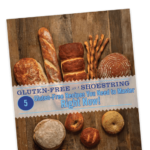
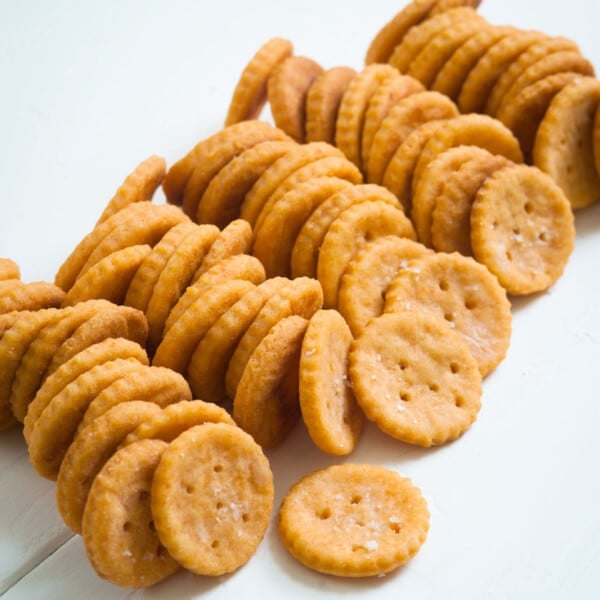
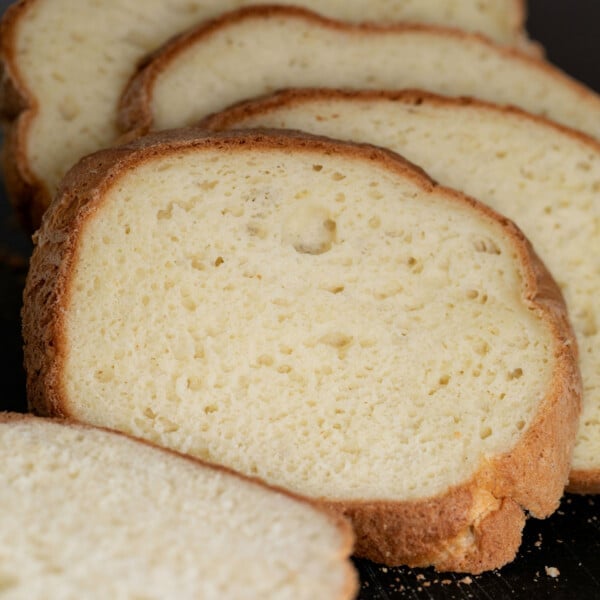
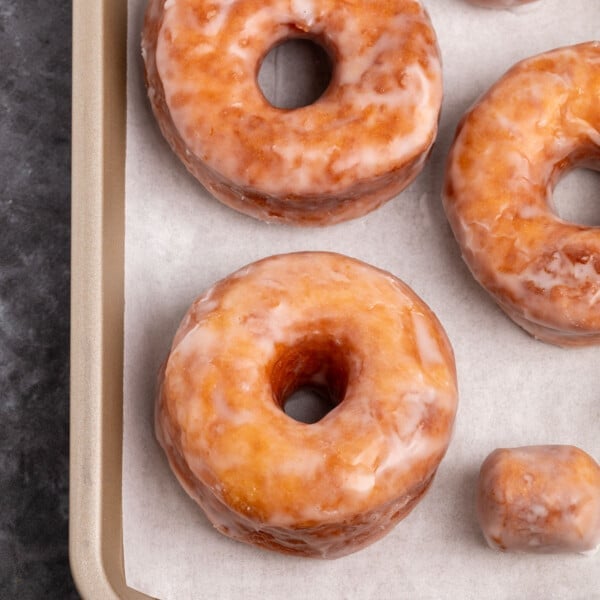
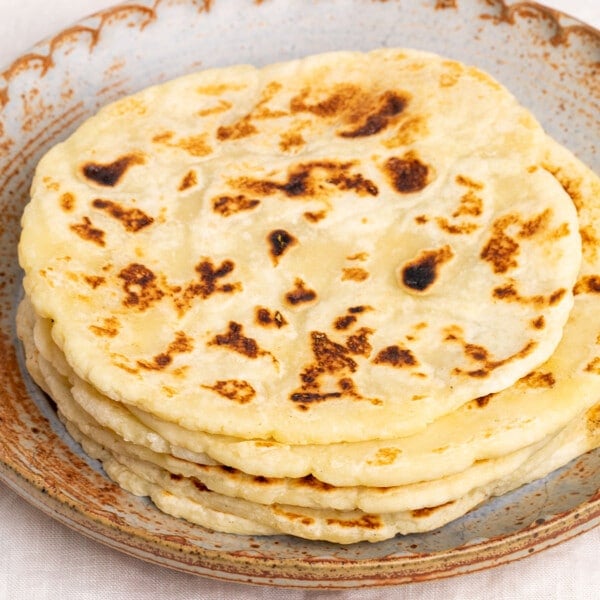









How many calories per slice
Hi, Barbara, I’ve added approximate nutrition information per slice, assuming you used the “all purpose gluten free flour blend” variation (not the bread flour blend variation), and assuming a single loaf cut into 10 slices. It’s very approximate, and I caution you not to rely on it to meet any health or equally important needs!
Hi Nicole, I love your English Muffin bread. I make it all the time. Lately, the last three loaves I made seemed to baked enough registering the temp stated, but the centre is deflated compared to the rest of the bread. I love the crispy crusts and wonderful moist interior. Is there something I am doing wrong that makes the centre not rise as much and becomes quite dense. (I still eat it, or have ground it up and used for breading chicken. :) Thanks Jeff
If you are suddenly having a different experience, then I’m afraid you’ll have to try to figure out what you started doing differently, Jeff, and there’s no way for me to know. Generally when baked goods rise and then fall as they cool, they’re not fully baked all the way through and the center doesn’t have the structure to support the rise. That usually happens when an oven is too-hot, so the outside bakes too quickly and baked goods bake from the outside in. If you’ve switched any ingredients, especially the flour blend, or aren’t measuring by weight you can get inconsistent results. If you started using nonfat milk, for example, that has more water and could cause issues.
Can this be made with water or non dairy milk?
No, not water. Please see the text of the post under the heading “Gluten free dairy free English muffin bread”
Hi, I’ve just made a double batch it’s rising. I hope using the Pullman tin will be okay. I’m using two 1 litre tins. My plan is to rise in my kitchen aid mixer then half the quantity into the two tins that I’ll line. I thought I’d oil the lid and I saw a video to put the lid on for the second rise but leave open a little so you can see it rising. Once risen put into a pre heated oven and bake with the lid on. Making sure there is enough room with baking two together. Last week I baked for 35 minutes (just one) but it was a little raw inside so I returned it to the oven. It ended up taking 1 hour. Will it bake quicker in the Pullman tins please ?. I think trail and error on my first use of the tins but excited. Thank you for your wonderful recipes.
Wendy, whenever you put two baking pans in the oven at the same time, you have to rotate the pans and make sure there’s enough air circulating. Doneness is not a factor of time, so baking times are always approximate.
Hi.is the 490g of all purpose GF flour variation here correct.
It doesn’t seem correct.
It has made a very stiff dough not a soft dough.hende a poor rise.
Using the mock better batter flour mix.
Yes there isn’t any error in the recipe, Corrine. Did you measure by weight, not volume, especially in measuring the components of the flour blend and then measuring the flour blend itself? Did you perhaps follow the ingredients for the bread flour version without realizing it for part of the recipe? What you’re describing sounds like a poorly hydrated dough, which could come from undermeasuring liquid and/or overmeasuring flour (or making an error in creating the mock flour blend itself, which is unfortunately quite easy to do if you’re not paying close attention since there are so many components). If you made any ingredient substitutions, I’d also look closely at that—including in building the flour blend, which is very precise and any substitutions will affect performance. For example, did you use a superfine white rice flour and superfine brown rice flour? They are essential. It’s unfortunately just not really possible for me to know where you deviated from the recipe as written.
This was my first attempt at baking Gluten Free English Muffin Bread and it turned out beautifully. The bread had a great rise to it. I only had to proof it for 45 minutes. I substituted Splenda baking blend instead of regular sugar. This tastes incredible. Thank you for sharing your recipes. All your hard work has pleased so many people. I plan to make your Lemon Poppyseed Muffins, French Baguette and Artisan Cheese Bread next. Looking forward to baking more of your wonderful recipes. Thanks again!
I’m so glad, Elizabeth. Thank you so much for the kind words. I like your recipe lineup!
Hi, I’m new to eating Gluten Free and tried this as my first ever attempted at handmade gluten free bread (I’ve made bread with normal flour before) and it rose both times before I put in the oven but after the time was up I noticed that it, while it was golden, didn’t have that tell tale thump side. Worried I cut it in half and noticed that the inside was still raw. I’ve cook it for at least another half our (covering it with tin foil so the top didn’t burn) and the bread down pulls apart slightly instead of just mushing in on itself, but it still looks dense and wet and not fully cooked but I don’t understand how it could not be, especially since this look ins’t just in the middle but throughout the entire loaf including near the edges. Do you, or anyone else, have an idea what I messed up and why it was like that?
Here are the basic questions I recommend you ask yourself, Sophia:
Did you measure by weight, not volume (volume is simply not accurate)?
Did you use one of my recommended flour blends? My recipes will not work with a poor quality blend.
Did you make any ingredient substitutions?
Did you bake at the proper temperature? Most ovens aren’t properly calibrated, so you really need a simple analog standalone oven thermometer.
All purpose flour variation – if I understood correctly; I don’t need to let the dough rise? I can transfer it directly into the loaf pan and to the oven? But with bread flour variation, I need to let it rise first?
I mean I am not doing the bread flour variation since in Europe its kinda hard to get tapioca starch expandex or ultra-tex 3.
I managed to do Gluten Free White Sandwich recipe, and I love it.
This is my first try on English muffin bread :)
Each needs to rise, Mario. The bread flour variation rises twice—once in the bowl, once in the loaf pan. The all purpose gluten free flour variation rises in the loaf pan only.
Ever since buying your fabulous GFOAS Bakes Bread, my kids have fallen in love with this bread. I love it, too, as it’s so quick and easy to make , not to mention delicious! It’s on a pretty constant rotation in our house.
So glad!!
The English Muffin Bread using Bread Flour did not call for eggs, nor butter, nor oil! Was it left out of the recipe on purpose, or was it overlooked; or does the whey and modified tapioca make up for it? And for my clarification, the baking soda is strictly for the All Purpose Flour version, correct?
Sounds like chemistry to me (which I know nothing about).
Thanks for all your experimentation and hard work. I have been throwing away loaves of gluten free bread for several years now. Hoping these recipes work for me.
There was nothing overlooked, Verna. Using my gluten free bread flour blend makes the whole recipe simpler. Please read the post and recipe very carefully and follow the recipe precisely, whichever variety you choose.